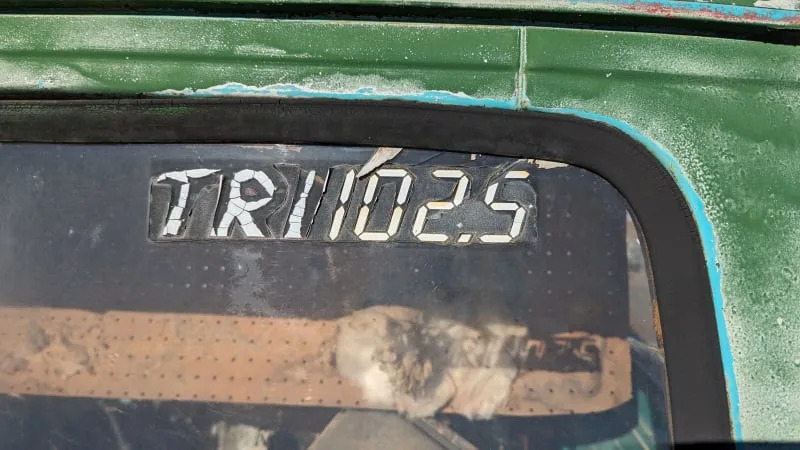Volkswagen's small Type 2 Transporter vans and pickups sold surprisingly well in the United States during the late 1950s; Detroit took note and began working on its own competing designs. The Transporter had a usefully flat floor, achieved by putting a boxer engine in the rear, and General Motors copied this layout with the Chevrolet Corvair van and pickup, which debuted for the 1961 model year. Ford was ready with a Transporter rival that year as well: the Econoline. Most 1961-1967 Econolines sold were vans, but a pickup version hit American streets as well. I've found one of these now-rare pickups in a family-owned boneyard in the Colorado High Plains, and it has stories to tell.

The first-generation Econoline managed to get a flat floor and large cargo area on a short wheelbase by using a forward-control design with a traditional water-cooled engine located under a "doghouse" between the front seats. This layout wasn't so great for occupant comfort or highway road manners, but proved exceptionally useful for maneuvering heavy loads down obstacle-course alleys and sidling up to cramped loading docks. The early Econoline vans sold like mad; starting with the 1964 model year, GM and Chrysler followed suit with similar forward-control vans (the ChevyVan/Handi-Van and Dodge A100).

GM didn't bother to make pickup versions of the ChevyVan/Handi-Van, though the Corvair Rampside pickup held out through 1964. Chrysler sold pickup versions of the A100/A108 through 1969.

The original Econoline's chassis was developed from that of the 1960 Ford Falcon (which makes it a cousin to the first-generation Mustang), and some Econoline passenger vans were sold with Falcon badging. In Canada, Econolines got Mercury badges.

The warranty tag tells us that this truck has a 90-inch wheelbase, is painted in Caribbean Turquoise, was assembled at the Lorain Assembly plant in Ohio and sold through the Salt Lake City district sales office.

As someone who came of automotive age during the early 1980s in the San Francisco Bay Area, this sticker on the dash is very familiar to me. KOME was a San Jose FM station that broadcast the kind of hard rock and sexual innuendo that paired well with Detroit V8s barking through open headers during the late 1970s and early 1980s. I listened to KOME in my hooptie '67 GTO and I had one of these stickers on my high school locker. This van must have lived in the Bay Area for a while back then.

If an Econoline pickup had a factory radio, it would have been a single-speaker AM-only type. The owner of this truck remedied that problem by installing this aftermarket FM/cassette underdash unit, probably in the late 1970s. Don't touch that dial, it's got KOME on it!

This sticker on the rear glass appears to be an early-2000s-vintage one from TRI 102 in Loveland, Colorado. The collector-car license plates date from the middle 1980s or so. All of these clues suggest that this truck was born in Ohio, sold in Utah, moved to California at some point before the early 1980s, then migrated to Colorado a bit after that and stayed in service until at least the early part of our current century.

This engine appears to be of later vintage than the 170-cubic-inch (2.8-liter) Thriftpower straight-six that was in this van at its birth, but it's a member of the same family. 1961-1967 Econolines never got factory-installed V8 engines, although many such swaps have been performed by owners.

The transmission is a good old three-speed column-shift manual, known colloquially as a "three-on-the-tree" and available in new American pickups well into the middle 1980s.

There's a Datsun B210 Honey Bee hubcap in the bed.

For the 1969 model year, Ford moved the Econoline onto the F-Series truck chassis, giving it a front-engine layout in the process. GM and Chrysler did the same with their vans soon after.

These trucks are worth good money when in nice condition. This one appears to be too rusty to be worth restoring, sadly.
All the way new, to save four big ways!










Sign in to post
Please sign in to leave a comment.
Continue